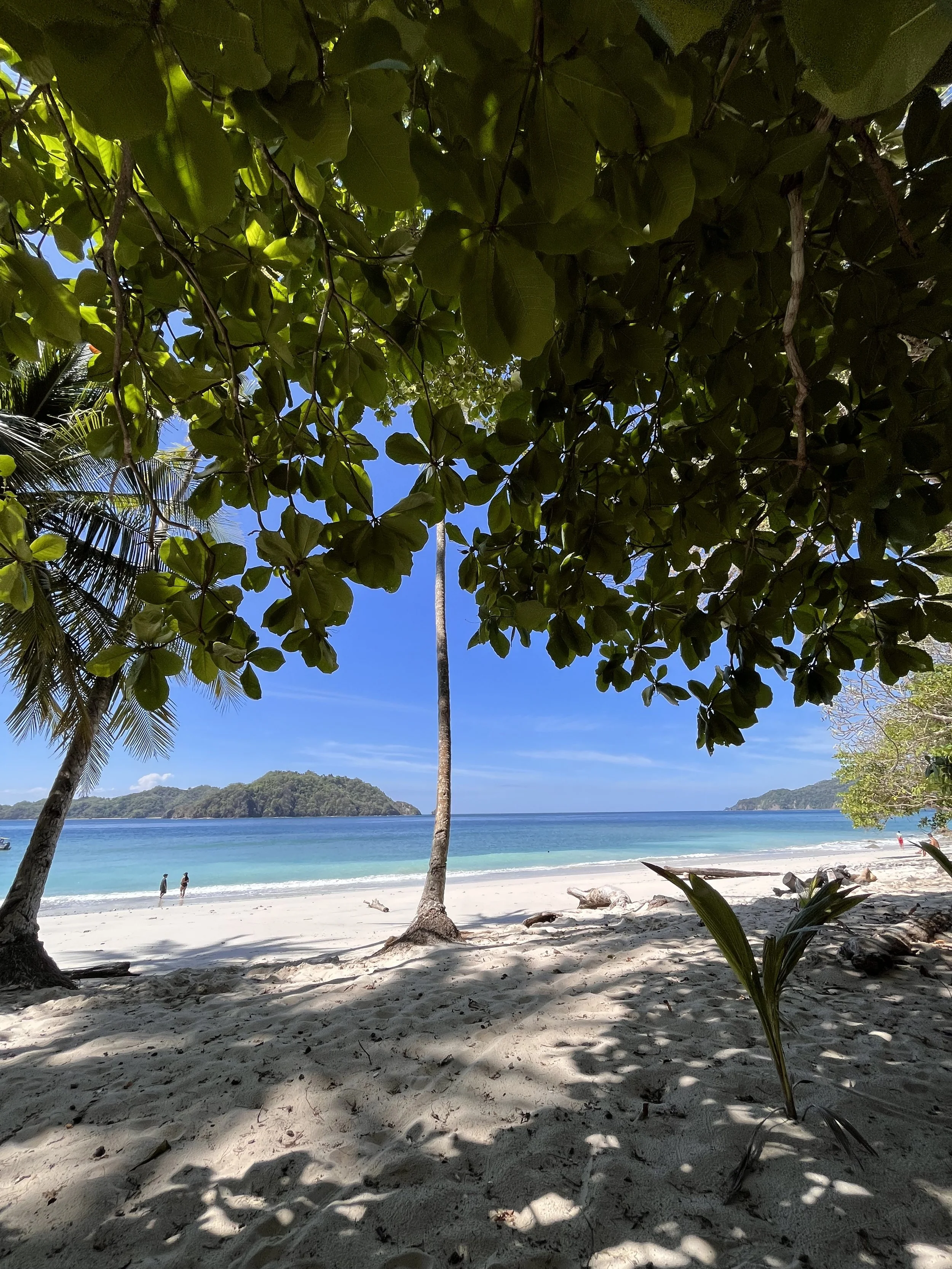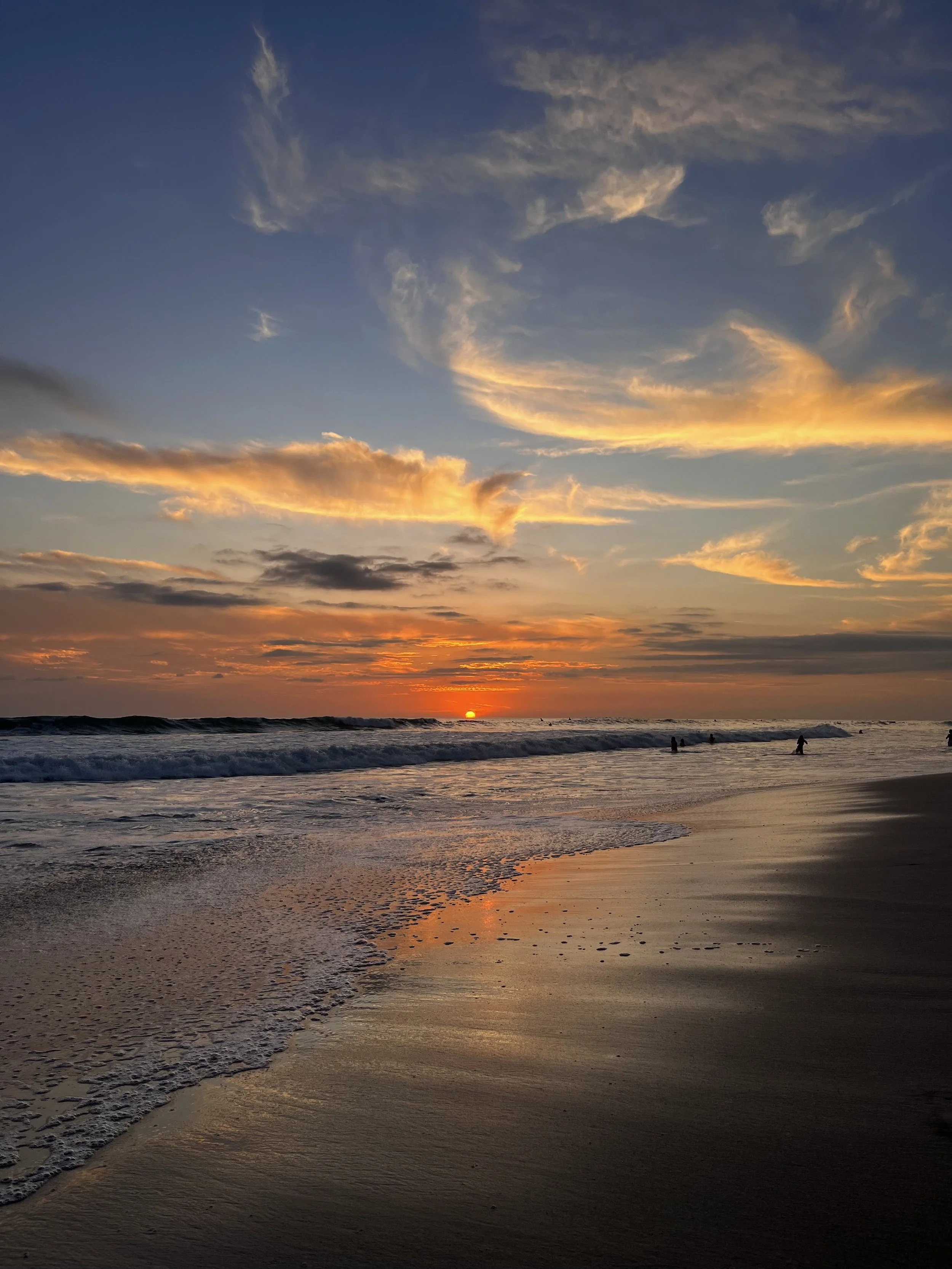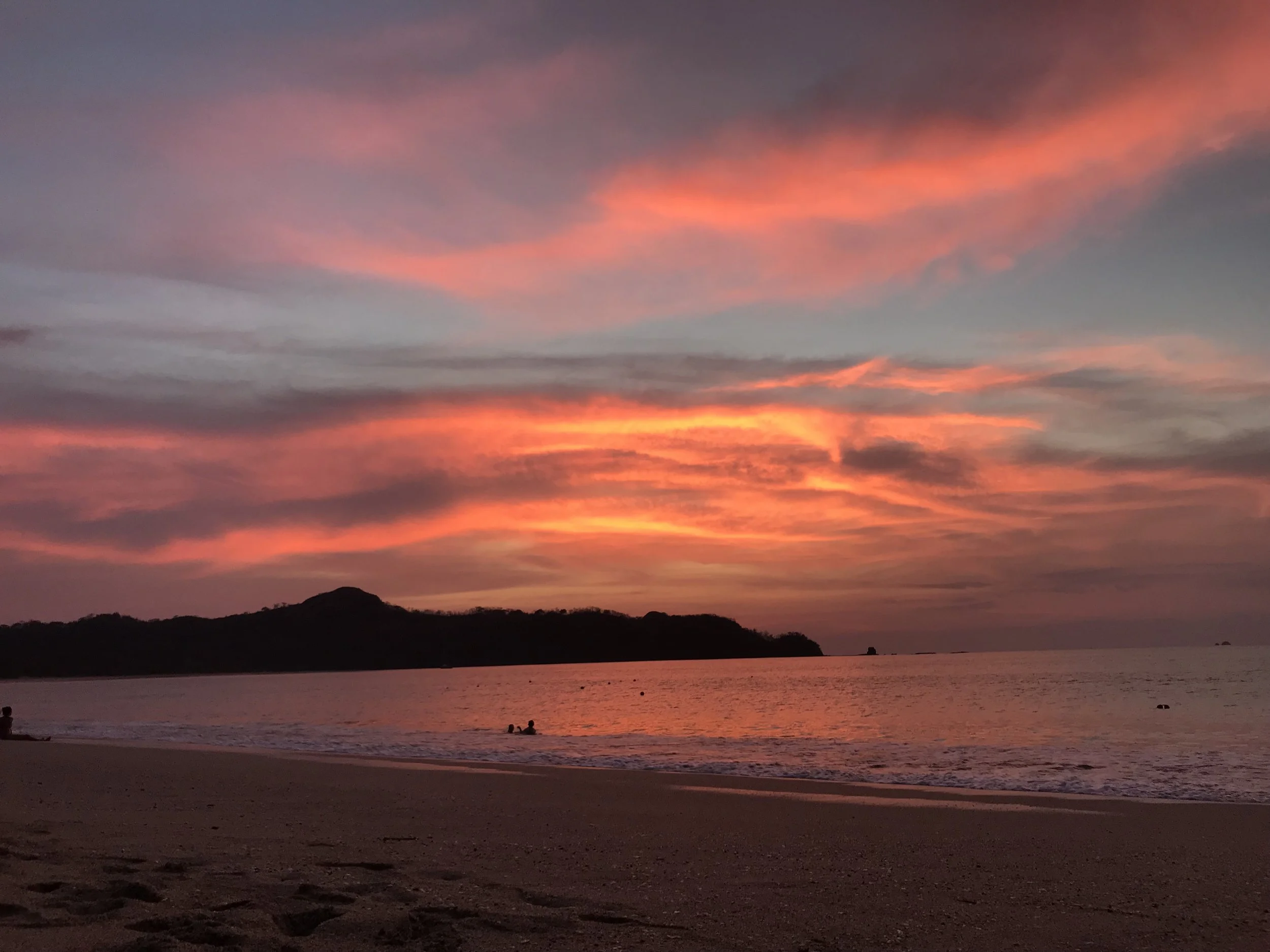Guanacaste: The Last Frontier
An exhillarating itinerary through Costa Rica’s remote Guanacaste Peninusla
Highlights: The best of Costa Rica’s wild western peninsula. Soak in the clear blue waters at Quesera beach, experience the bohemian vibes of Santa Teresa, observe the sea turtles in Nosara and relax on a beach filled with seashells at Conchal Beach.
Airport: Fly Into Juan Santa Maria, Fly Out of Liberia
Itinerary Length: 1 week to 10 days, depending on the pace you want to take.
Adventure Level: High
Car: Preferably 4x4 or Campervan.
Best Time of Year: December-April
The Guanacaste Peninsula
The Guanacaste Peninsula is very endeared by most Ticos (Costa Rican nationals), and was territory they gained during the Annexation of Guanacaste War against Nicaragua. It’s a place where they can escape the city and get back to that Pura Vida essence. Every Tico you talk to calls it “preciosa” or “lindisima” and for good reason. There are so many untouched and undeveloped beaches here with warm blue water, and it feels as if the jungle runs right into the ocean. We may have mentioned this before, but no one can own the beaches in Costa Rica, and we love that. A campervan rental from Nomad America can be a great way to explore the region and get off the beaten path.
Starting Point: Quesera Beach (Day 2)
Once you land in San Jose, grab a hotel room close to the airport and take the day to relax or go to explore the city, but don’t stay out too late, because you’ll have an early morning ahead of you. On day two, you’ll get up bright and early to make the drive to the ferry from Puntarenas to Paquera. It takes about 1.5 hours from the airport to the ferry. The ferry can be booked directly on their website and it is recommended to do so at least a few days in advance, especially when traveling by car on the early morning and evening routes. The 6:30 am ferry is best to be able to enjoy your day at Quesera Beach. Once you get off the ferry, you can stop for breakfast at a local “Soda” (small typical restaurant) to eat Pinto (Beans and Rice) con huevo (egg), salchichón (sausage) and natilla (sour cream) with un fresco natural (fresh fruit juice), and then drive to the Curú Wildlife Reserve.
Quesera Beach Logistics:
Quesera beach is part of the Curú Wildlife Reserve, and was recently reopened after being closed for several years. They are working to re-earn their status as a blue flag area by meeting management, awareness, and sustainability-focused criteria set forth by the Costa Rican government, so are very careful about keeping the area clean and managing the effects of tourism on the area. For that reason, we recommend booking one of their overnight packages online ahead of time. We recently tried calling and texting their line for a day reservation to the beach, and had a tough time getting through. Their cabins are very basic, but are clean, and you’ll wake up to the sound of howler monkeys and tons of bird species, plus get a full day in at the beach.
Things to Do at Quesera Beach:
The reserve offers horseback tours to the beach as well as boat tours that can be booked from the front desk, but we always believe in earning your beach time and think the hike is beautiful. It’s about a 5.1 kilometers that includes several hills and a mix of shade and blazing sun. You will need at least 1.5 hours to get there and 1.5 hours back, as well as water and snacks, since there are no services at Quesera Beach (just how we like it). Once you’re there, sit and relax on the beach, or cool off in the pristine water. While we were there, we even saw a whale breach several times in the bay. At night, there is also bioluminescence in the bay by the cabins to enjoy!
Quesera Beach has a good amount of shade for lounging all day after the hike in!
We were the first people to arrive in the morning, but overall it stayed very low-key since it’s so isolated and limited to a certain number of visitors per day.
Santa Teresa (Days 3-5)
On day three, take your time getting to Santa Teresa as you mosey through towns like Tambor along Route 160. Google Maps says it will take about an hour and 15 minutes, but we’d say more like 2 hours, especially if you avoid the potholes. Montezuma is a fun town to dive off and eat a fresh seafood lunch on the way. It feels like the end of the road, and that’s very much how they want to keep it.
Once you get to Santa Teresa, you’ll feel like you’ve been into a transported to a different country. You’ll hear a different Spanish being spoken and may even hear Hebrew or Arabic being spoken due to the many Argentinean and Israeli expats that have settled here. This is not a Costa Rican local’s spot and can be quite expensive, but it is a cool worldly community, with great food, music and nightlife, plus the people watching is top-notch and you might even spot a celebrity like Shakira or Tom Brady walking the beach.
Things to Do in Santa Teresa
There is so much to do here, but we recommend spending the day beach hopping or taking a 4x4 tour of the area! The Guanacaste peninsula feels like the wild west in so many ways, with rivers covering the dirt back roads during raining season and red dust flying everywhere during dry season. You’ll cruise past cattle and horses and see cashew, teak and almond trees growing wild.
A ride through the interior of the guanacaste peninsula will leave you in awe and with a little dirt in your mouth.
If you’re into more low-key activities, the yogi/wellness scene is a big here, and there are many classes offered to tourists and locals alike. Santa Teresa is also known for its surf break, which is explains the large international presence. We do not recommend this as a place to learn to surf due to the intense rip currents, but if you are an expert, it can be pretty rad.
One of the coolest things about Santa Teresa is how everyone flocks to the beach at sunset. It’s by far one of the best places to watch the sunset in Costa Rica during the dry and shoulder seasons. You may even catch a wild Argentinian drinking Maté with their friends.
Santa Teresa Sunset at the end of the dry season in April.
Nosara (Days 6-8)
After you’ve soaked in all the beautiful people and sunsets, you’ll drive up the coast to Nosara. We recommend getting back to the main route 160, since side roads in Guanacaste are often washed out or have potholes that could actually swallow a dump truck. Nosara is another artsy international community, but slightly less developed than Santa Teresa. The big focus here are the sea turtles at the Ostinal Reserve - it’s the only place in the world where you can see the turtles lay their eggs on the beach every month of the year. The “arribada” is a once in a lifetime opportunity and should be the main highlight of this trip
Baby Sea Turtles walking out to sea.
Things to Do in Nosara
The Nicoya Pensinula (and Guanacaste Province) are known as a “blue zone”, which means that it has a large population of centenarians. This is attributed to the simple whole food diet and active yet slow lifestyle of the peninsula. So what better place to take a cooking class, you are what you eat after-all.
After you’ve stuffed yourself with ceviche and tortillas, you’ll probably want to take a nap in the hot afternoon sun, but if you’re feeling fueled and seeking adventure, you can repel down a waterfall to cool off, or take a guided bike tour through the back roads ending with a cool dip in the ocean.
Conchal Beach (Day 9)
Once you’ve found enough thrill, and before you take off from this beautiful country, be sure to stop off at Conchal Beach on your way to Liberia Airport. It’s one of the unique beaches in the world, with white shells instead of sand and clear blue waters, and a great place to spend the day. The currents can be strong, and it has a significant drop-off during high tide, so it’s best to be careful getting in. You’ll access it by driving across Brasilito Beach and up over a ridge. Basilito may fool you into thinking Conchal isn’t worth it, but I can tell you first hand, it’s a completely different beach on the other side of that ridge.
Conchal Beach with one of the most epic sunsets I have ever seen.
Frequently Asked Questions (FAQ)
Do I really need a 4x4 or high-clearance vehicle for this itinerary?
Answer: Yes, we strongly recommend a high-clearance vehicle or 4x4, especially for the Nicoya Peninsula portion (Santa Teresa, Nosara). While main roads are often paved, many side roads and the access roads to remote spots like Quesera Beach and certain accommodations are steep, rocky, and unpaved. A high-clearance vehicle minimizes the risk of damage from potholes and gives you the freedom to explore the best, most isolated beaches.
What is the best time of year to visit the Guanacaste Peninsula?
Answer: The Dry Season (December to April) offers the most consistent sunshine, which is ideal for beach hopping and reliable road conditions. However, the Green Season (May to November) brings lush, vibrant landscapes and fewer crowds.
For best weather: December to April (especially January-March).
For lush scenery & lower prices: May, June, and November (shoulder season).
For turtle nesting (Arribadas): Peak mass nesting at Ostional is typically during the Green Season, especially from August to October/November.
What currency should I use, and are credit cards accepted?
Answer: The local currency is the Costa Rican Colón (CRC).
Major tourist towns (Santa Teresa, Nosara) and larger hotels accept credit cards.
Cash (Colones or US Dollars) is necessary for the car ferry, small local restaurants (Sodas), park entrance fees, and small purchases. US dollars are widely accepted but change will usually be given in Colones.
Is the water safe to drink in Guanacaste?
Answer: Guanacaste, especially the southern tip, often still has issues with getting enough water during the dry season, so it’s always best to ask your accommodation host or use bottled water for peace of mind.
How much should I tip in Costa Rica?
Answer: Tipping is not mandatory, but always appreciated:
Restaurants: A 10% service charge is usually already included in the bill (labeled as servicio). Additional tipping is optional for excellent service.
Tour Guides/Drivers: Tipping is customary. A common rate is $5-$10 per person for a half-day tour, or $10-$20 per person for a full-day tour.





